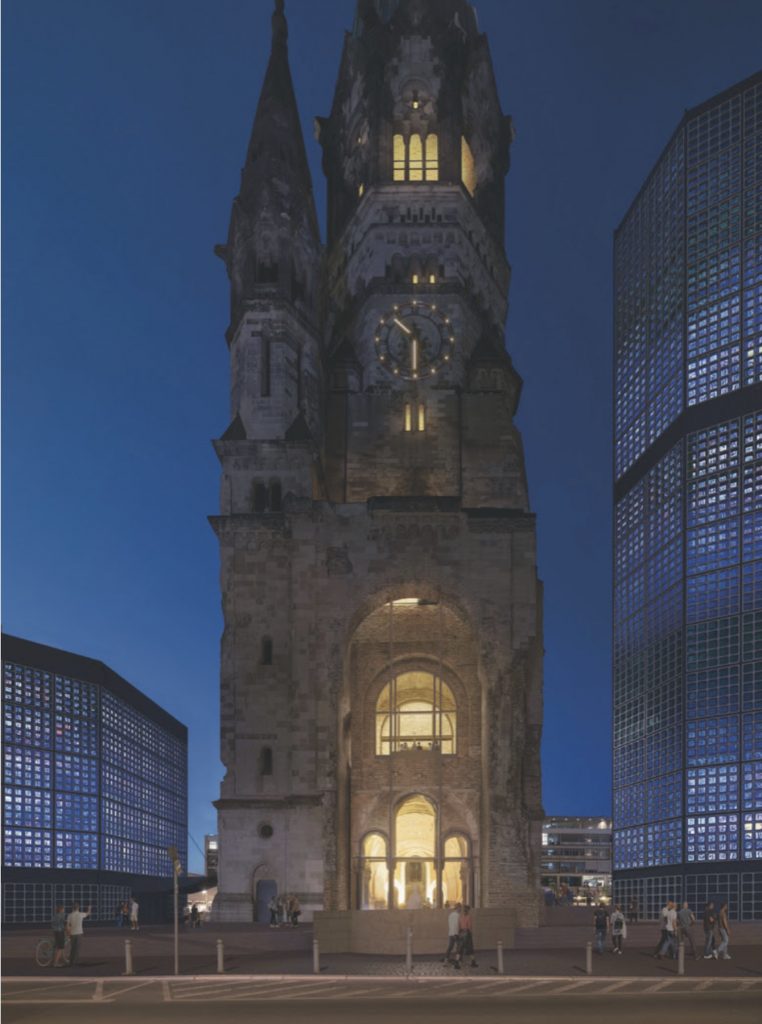with Stanley Collyer
COMPETITIONS: I’m not certain how familiar you were with previous competitions in Taiwan; but this one had much in common with previous ones, in that it was also international in format.
MARK ROBBINS: They are quite high profile for remarkably large-scale projects.
COMPETITIONS: This is similar to the others, and, like those, had two sessions. Were you able to take part in both of them?
MR: Yes. It was on Kinmen Island, which I had never been to. And it has an interesting history. First of all, the U.S. government has had to figure out the deaccessioning of the bases that were military. This is a large island that had been used for military purposes, for although it is part of Taiwan geographically, it is closer to the Chinese mainland and was shelled pretty relentlessly. But because it had been closed off to development during this period, it had a very natural environment—it has one of the highest levels of biodiversity of any area in Taiwan.
So the redevelopment of this becomes quite important, because you have an island, which is now strategically located, interestingly not for military reasons, but commercial reasons. This is expected to make it valuable because of the robust commerce between a Mainland China that still finds they can get a greater variety of consumer goods in Taiwan. Rather than flying goods in, it will be by boat, which is slower, but less expensive. So it will become a vast duty free area. And that was part of the motivation for this competition—to make a more accessible gateway for trade to and from Mainland China.

COMPETITIONS: Biodiversity caused by the lack of development during the Cold War brings to mind a similar situation in Germany on the demarcation line between East and West, where a large restricted strip on the eastern side of the border resulted in an untouched refuge for birds and various species.
MR: One seldom thinks of that. In Kinmen there are some of the best-preserved architectural artifacts, both from the Japanese colonial period and from earlier Chinese trading families. There are a series of buildings that have neoclassical detailing, but built around traditional courtyards in a Chinese format. These were families that wanted to display their wealth in the 1800s, through symbols displayed by western architecture. Because of the Cold War period and the lack of development, these were also preserved.
COMPETITIONS: So the jury met there twice.
MR: All the jury members attended both sessions. I have been on previous juries where only one or two members were present, leading to a lack of continuity. Here everyone was present for both sessions.
COMPETITIONS: How long did the sessions last?
MR: For the first one we must have been there four days. It was quite complicated, Kinmen, the tours, getting to know the island. It is basically a tourist island now, but practically uninhabited in the winter—a little bit like The Shining, where it seemingly just had us by ourselves in the rooms. We toured some of the sites where the military had done a series of defensive caves from where large artillery guns could be fired. These have now become tourist attractions; but there are also a series of parks and wildlife preserves. So there is kind of a smart way in which the local government is capitalizing on this.
COMPETITIONS: How about the way in which the jury was communicating. I would assume that most of the local jurors—many of whom have degrees in America—are pretty fluent in English.
MR: You could probably draw up an essay on how to affiliate or disaffiliate the language. We were quite conscious (of that)—there was a Brit, an American, a Japanese, and Taiwanese from different cities. The latter all had affiliations with schools, and represented different positions within the Taiwanese constellation. Their English was mostly good—certainly better than our Taiwanese. There was English for probably 70%; but we did have translators, not only for English, but also Japanese for that juror, whose English was okay but couldn’t speak Taiwanese. It certainly worked for Isozaki. There were probably more conversations in foreign language, and you are always depending on the translator, since you are speaking about things, which are quite technical. It really depends on the translator to get that: oh no, this is important; that is not so important! If the conversation becomes quite heated, it can be difficult to get very nuanced through a translator.
When I was on the jury for the Mexican National Library, we did the majority of (the discussion) in English. I think we, as foreign jurors, were conscious of making sure that the conversation did happen in Taiwanese, and we also elected the head of the jury to be someone from Taiwan, rather than one of the visiting jurors.
COMPETITIONS: After coming up with the shortlist, did you already see a favorite in the first round? Was there any significant change in your perceived ranking from the first to the second round?
MR: Juries are complex and subjective, and I’m sure if you asked that same question to different people on the jury, they may have had different frontrunners going in. Many of the architects in the competition had worked for prominent architects. So we were getting people who had worked for prominent architect A, prominent architect B, etc. So we could see the lineage very, very clearly. There were some whom we had hoped would produce more from the first to the second stage. I found myself thinking about the results of the competition. Most teams made amazing renderings for the second stage, very impressive models, fly-throughs. I thought the amount of money offices spend doing these is phenomenal. But I also would have hoped that there would have been greater transformation in some of the nuclei of the projects that we had selected that could have been followed. I don’t know if that was a lack of transmission of some digest of the jury comments. like ‘hello, we like A, but its site strategy is not as well organized as we would like;’ or that ‘we have a building that seems very interesting as an idea, but doesn’t seem to work in terms of traffic flow;’ or ‘we find the iconography is a bit cloying, but the structural system seems fascinating and could a more interesting project if you could let go of the kind of big idea and allow the project to adjust to its site in a more productive way.
So you can ask the question of the process: do people spend so much time and effort on making amazing drawings and incredible fly-throughs, and do we privilege that kind of thing because these things become like beauty pageants, rather than using the evolution from first to second stage as a working process. That would require greater exchange. People can always launch questions, and those questions can be made public. For those finalists to have greater input allows them to project some of what is very strong in the project in the first stage, but allowing it to develop. But it is not quite as diagrammatic.
You get the sense that the diagram remains constant; there are material choices, and there is a better background for the sky and more breath-taking sunset and fly-through, but the essential diagram hasn’t changed nor has it evolved. I’m not sure that we work in a closed loop that could be beneficially opened.
COMPETITIONS: Was there much discussion about an icon?
MR: It was very important that this idea would speak about the future, a forward-looking culture and a welcoming gateway for Kinmen Island. The discussion of having a building, which is iconic also generated a really robust discussion: does this look like an icon, but an icon from 15 years ago? Or is it an icon of a very specific brand? People want an icon, but they don’t want it to look like somebody else’s icon. They don’t want it to look like Frank Gehry. They want something that looks new and fresh. That want it to look specific like something that grows out of the site.
COMPETITION: The winner looks very much like a park. How did the jury settle on that?
MR: I think the people who were speaking strongly in favor of the project, liked the notion that it was building as mountain and it somehow made reference to the topography of Kinmen and the natural environment, and that it would clearly be of a scale and form that no other place had. There was a lot of discussion about issues of sustainability and how we steward the landscape. As for the question of the icon: is the symbol of nature the same as actually making something, which is, in fact, a sustainable element within the biosystem. So you have to think about how this actually gets resolved. So I think this is still at the level of diagram, and one would like to think that as this evolves, it might go from symbol of nature to something that actually either sponsors or allows responses a kind of either natural environment conversely creates some juxtaposition between manmade and nature.
COMPETITIONS: My last question is, the interior renderings of the winner were pretty empty. You can always change that, but the other finalists went to a lot of trouble to design the interior. But here you have some encroachment of vegetation into the interior at the edge, but that’s it.
MR: I was interested in the relationship between the pools of light from above. How do you get light into these immense floor plates, then the relationship between those borders, that edge that seemed planted? But there hadn’t yet been a design decision about how you would make troughs that would accommodate that margin which was planted. It’s not like ….. that just hangs on the surface; it actually needs depth if it’s going to be planted. And how do you make the transition once a wall is placed in, or you have to demarcate interior from this planted margin. I think we all felt this was a very bright architect, and all of those are going to have to be developed. One would like to think that the building on the inside has some relationship to the views out to the harbor on one side, the hillside on the other, and that it is developed that it becomes this organic interior, which would be more akin to the TWA building, which has its own remarkable divisions of space—given the way the walls are made—and there the divisions between levels are more seamlessly handled. This (design) in some way has still fairly easily read divisions between layers of the building. I would like to see how that evolves with maybe greater penetration and more articulation. Or it could just be a box from which to view the land and the water.
To learn more about the Port of Kinmen Competition, read our previous article: A Sign of the Times? Port of Kinmen Passenger Service Center International Competition

































